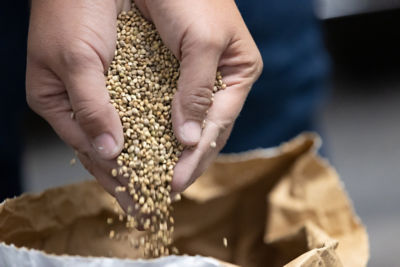Causal Agent
Tobacco mosaic virus (TMV), Tomato mosaic virus (ToMV), and Pepper mild mottle virus (PMMV)
Vector
Mechanically transmitted with no known insect vectors
Distribution
Worldwide
Symptoms
Symptoms of infection by TMV and ToMV in peppers and eggplant can vary greatly with the strain of virus, temperature, light intensity, day length, age of the plant when infected and cultivar. Foliar symptoms include chlorotic mosaic, distortion and, at times, systemic necrosis and defoliation. Plants infected as seedlings can be stunted and are generally chlorotic. Infected plants produce disfigured fruit that are usually small with distinct chlorotic and/or necrotic areas. Foliar symptoms of PMMV in peppers are also variable but are generally mild. Plants infected as seedlings remain stunted. Leaves develop a subtle mosaic, can be crinkled, and remain small. Symptoms may first appear on fruit. Fruit can be mottled and necrotic, are usually small and distorted, and have a rough or wrinkled appearance.
 Deformed and mottled pepper fruit.
Deformed and mottled pepper fruit.
Conditions for Development
TMV and ToMV have very wide host ranges and infect over 200 plant species, including varieties of peppers, tomatoes, eggplant and tobacco. PMMV can infect all species of peppers, but not tomatoes, tobacco or eggplant. Infected transplants, seed and debris are common sources of inoculum. These viruses can be found on and under the seed coat and in the endosperm. Tobamoviruses are very stable, and extensive spread can occur through handling, tools, trays, pots, stakes, twine and clothing, as well as pollination, pruning and other cultural practices. Tobamoviruses can remain viable for several years in plant debris, but generally lose their ability to infect as debris decomposes.
Control
Enforce strict sanitation practices during production and harvest to minimize infection and prevent spread. Restrict access to the crop, wash hands and equipment with a soap solution between plants or rows of plants and before entering a greenhouse. There are reports of successful prevention of tobamovirus spread by coating hands, plants and equipment with a solution of powdered non-fat milk. Rogue symptomatic and adjacent plants, and rotate to non-solanaceous crops to manage disease. Use seed tested and treated for tobamoviruses. Many hot pepper varieties contain hypersensitive resistance to TMV and ToMV. Use resistant varieties in greenhouse production where tobamoviruses are a problem. Some strains of PMMV may overcome the commercial resistance.




